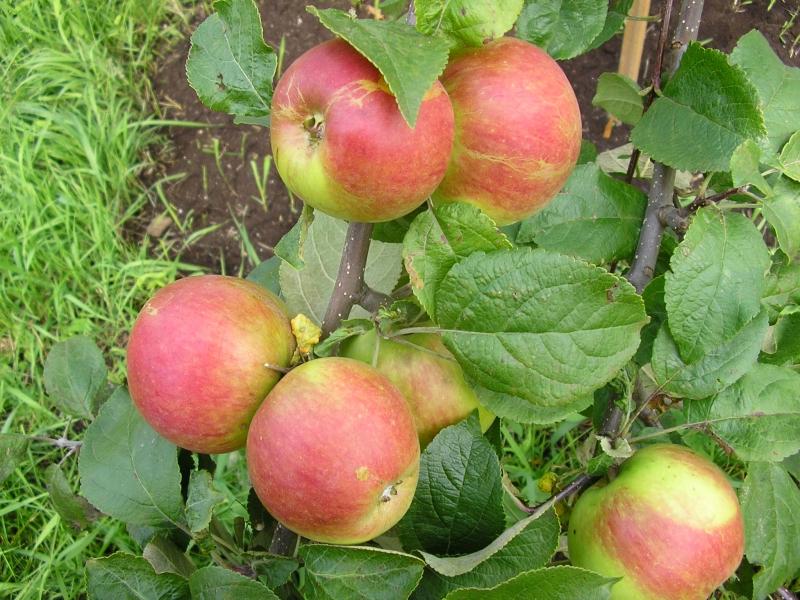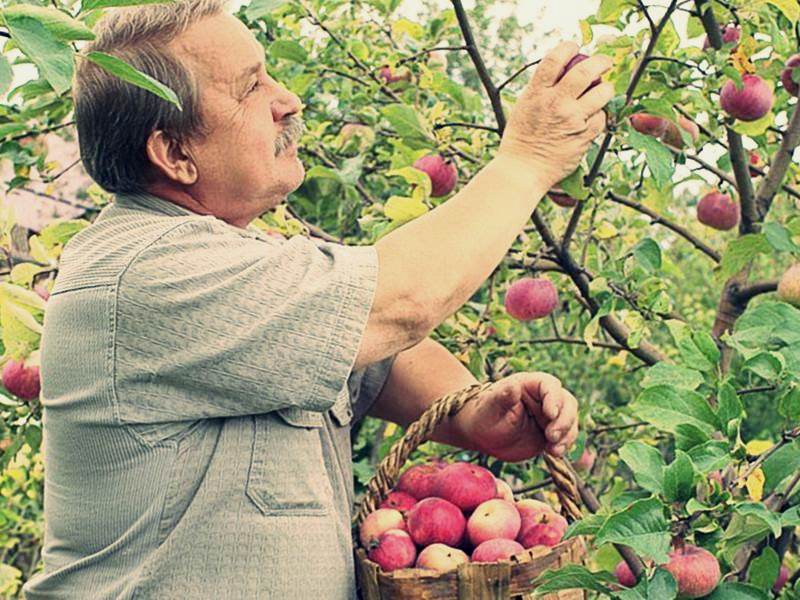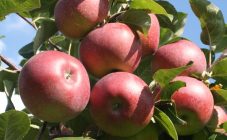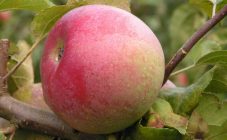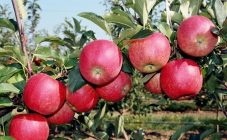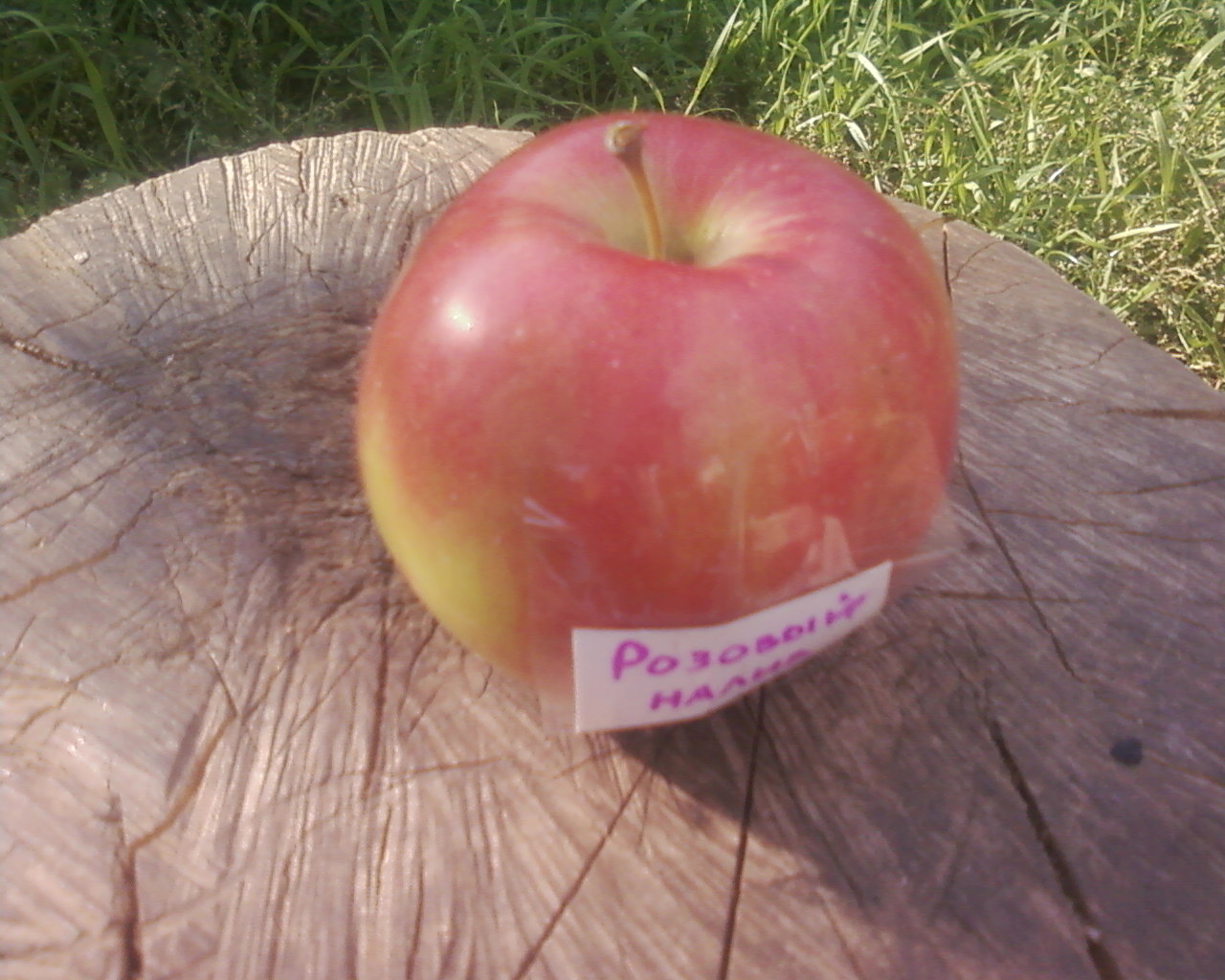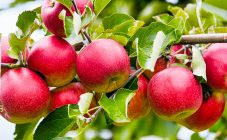Variety Young Naturalist is also called Yunnat. The Michurin All-Russian Research Institute of Breeding undertook the breeding of this variety. Scientists took two varieties: Welsey is a winter variety, the second is Brown Striped, this is autumn. Breeder Isaev supervised this work, in 1935 the variety was bred, it was entered in the State Register in 1993.
Specifications
The ripening period of the variety is mid-autumn. The size of an adult apple tree is not at all dwarf - about 3 meters, maybe up to 4. It grows in an average way. The crown has a rounded shape.
The Young Naturalist apple tree has a dark brown bark, maybe a brown shade. The shoots are medium, brown, but slightly lighter than the bark. There may be a small edge on the shoots.
The leaves are not very large, like an ellipse, they have short tips. The apple leaf color is dark green and the surface is matte. If you look at the leaf plate from below, you can see the edge. The plate is bent quite a bit. When the tree matures, the edge appears more strongly on the back of the leaf. The vein is very clearly visible, and the central one is immersed in the leaf plate.
The flowering of the variety begins in May, the flowers are white and blue. In this case, the flowers self-pollinate.
To remove a crop from a tree, you need to wait at least five years. Experienced gardeners say that it is best to harvest apple trees between 6 and 7 years old. Productivity manifests itself over time: the older the tree, the higher its yield. However, sometimes the harvest may not be every year, but after 1.
The fruits of the Yunniy naturalist apple-tree are as follows: the size of an apple is average, the weight of one on average is 30 grams. They are of the correct shape, homogeneous, no wax plaque was found, the skin has an average density. The apple is mostly yellow-green. It may have stripes of bright red color, as if blurry. There are subcutaneous points, but they are small, white, almost invisible.
The peduncle has an average length, but it itself is thin. The funnel has a small coating, as if from rust. The calyx is either half-open or closed. The saucer has medium depth and width. The seeds of the Young Naturalist apple tree are dark brown in color, their size is medium.
The pulp of the Young Naturalist apple tree has the following description: the color is creamy, very juicy, delicate, the density is average, the apple tastes sweet and sour, dessert. When the tasting was carried out, the fruit was rated 4 and 5 points.
Usually it is possible to remove the fruits from the tree in the last days of September, about 20. However, they are left to hang a little until the beginning of October, so that they are finally ripe. They can be eaten until mid-December. Apples tolerate transportation well and can be processed. This variety is recommended for industrial cultivation, for example, on a state farm.
Agrotechnics
There is no season when it is better to plant an apple tree. Any experienced gardener can attest. However, two seasons are observed: either in the spring, when the sun is just beginning to warm the earth, or in the fall, but before the onset of frost.
The first thing to start with is that you need to prepare a certain place for planting an apple tree.They go to the garden or to the estate, preferably where the apple trees have not yet been planted and do not grow. When the place is finally found, a hole is pulled out, 2-3 months before planting. In this case, you need to look at the soil.
The first layer of soil is homogeneous, as a result of which it is laid separately, separated from the lower one. The bottom layer is also extremely necessary, they are sprinkled with a place around the planted tree. The pit is conventionally divided into 3 parts. First add the top layer, it is not mixed with anything. Thus, 1/3 is filled, then the same top layer is taken, but mixed with some fertilizers, for example, mineral, and the remaining 2/3 are added.
When the hole is dug, a mound should remain, not very large. Moisture must saturate the soil before planting a tree, a peg is placed in the mound, to which a tree is tied after planting.
So, it's time to plant a young seedling. You must first clean it so that there are no twigs or bark that have dried up. It is best to plant the tree with someone else to avoid damaging the root system. One person is holding a seedling, the other is looking at the roots: they are spreading along the hill at the same level with the ground. As soon as the tree is planted, it is watered with water, preferably with two buckets, sometimes 3, depending on the soil.
The tree needs to be looked after. Although the Young Naturalist apple tree is quite frost-resistant, you still need to protect it so that it does not freeze. In addition, the varietal tree can be affected by rodents. To prevent this from happening, you need to take branches from either pine or spruce. They tie the trunk of a tree, the aforementioned branches or fine manure are also laid below, fallen leaves are suitable.
In the spring, they prune, look at the branches: if they see that they are sick, were somehow damaged, dried up, they must be removed and must be destroyed. In the spring, prepare for the stock until the buds swell.
Also, in winter, snow near the tree is trampled, otherwise rodents will eat the bark of the tree. Snow can often be a very large layer, and it is not always possible to trample it, so it is best to put some kind of rodent poison next to the tree.
Apple trees are fed with organic fertilizers or nitrogen-containing ones. In this case, organic should contain potassium and phosphorus. They are used once every three years, do it in the fall. Nitrogen-containing - the apple tree is usually fed in the spring.
When the apple harvest is ripe, you need to monitor the fruits so that the load on the branches is not too great, otherwise they will break. To prevent this from happening, they usually put props.
Pros and cons of the Naturalist variety
The advantage of the variety is that it is slightly susceptible to scab, even if the weather period is too wet. However, pests can spoil the appearance of the apples, and also deprive the young apple tree of its productivity. As a result, they stock up on chemicals, for example, copper sulfate, take care of the apple tree. In early spring, they watch that the moth does not appear.
Also, the advantages of the variety are that the presentation of the apple is quite good, they look appetizing, they have a pleasant taste, and excellent yield.
The downside is the following: the yield is high, but after a while the tree begins to bear fruit not annually, but after a year.
People who have tried the Young Naturalist apples note their sweet and sour taste.Most often these are table apples, from which various juices are produced, as well as dried fruits. Many housewives noted that the jam made from these apples is very tasty.
